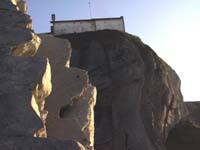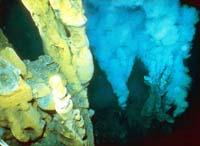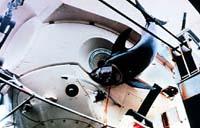Alvin, sea bottom explorer

The underwater crew A lvin has made more than 4,200 dives. (Photo: Max Planck Inst.)
A lvin Woods Hole is the submarine of the American oceanographic institute. It was built in 1964 and continues to be used, with more than 4,200 submerged and 12,000 scientists, engineers and observers who have carried the depth of the ocean. Normally the crew consists of a pilot and two scientists.
These people have been able to know firsthand the appearance of the seabed, its living beings and its chemical, geological and biological processes. Of course, Alvin has strong spotlights for it, as sunlight does not reach it. Receive images through the light of the spotlights and cameras. It also takes samples with robotic arms and collects liquid samples in bottles.
To reach the maximum depth, Alvin takes about two hours to climb and many others. The maximum underwater time in each dive is ten hours, so scientists have between 4 and 6 hours to observe the area, take pictures, collect samples and perform experiments. However, Alvin carries inside, just in case, enough oxygen for three people to spend 72 hours.
Scientific research

Hydrothermal fireplaces are one of the most interesting underwater geological structures. A multitude of living beings form around them. (Photo: University of Pennsylvania)
Thanks to A lvin, scientists have discovered many mysteries of great depths. Among others, more than 300 species of animals have been found: bacteria, worms, mussels, prawns, crabs... They have been found mainly around hydrothermal chimneys.
And it is that to great depths there is a full darkness and a terrible cold, so there is hardly any life. Except in hydrothermal chimneys. From these chimneys comes the hot water enriched in the minerals, around which life is at the pil-pil. These geological structures were first discovered in the Alvin submarine in 1979.
The hydrothermal chimneys originate in the ocean dorsal and for years Alvin has been used to study the global ocean turtle. The conclusions of geologists have served to complete the theory of plate tectonics.
It has been used not only for scientific research, but also for other missions. For example, in 1966 a hydrogen bomb was discovered lost in the Mediterranean thanks to Alvin, and in 1986 he made twelve dives to photograph the submerged ship of the Titanic.
The other side of the coin

In 1967, at dive 202, a swordfish hit the ship 600 meters deep. Caught in the helmet, the surface came out along with Alvin. (photo: Woods Hole Oceanography Institute)
In the long history of A lvin there have also been accidents. The truth is that there have been very few accidents, but one became famous, not because it was especially serious, but because, by chance, a couple of sandwiches became protagonists of the event.
In 1968, at Cape Cape in the northeast of the United States, while Alvin was on the water, the submarine cable was broken. Alvin sank to 1,500 meters. Fortunately there was no one inside.
He spent eleven months at the bottom of the sea and in the end, when they managed to get out under the water, they saw that the boat lasted perfectly: inside there were some sandwiches that, despite being candied, could eat. This shows that food can last a long time without oxygen and cold.
Americans are now building a submarine that will replace Alvin. Although they have gradually improved, there are things that cannot change, because they are basic. However, it will remain in the memory of many scientists around the world.
Published in 7K.
Buletina
Bidali zure helbide elektronikoa eta jaso asteroko buletina zure sarrera-ontzian











